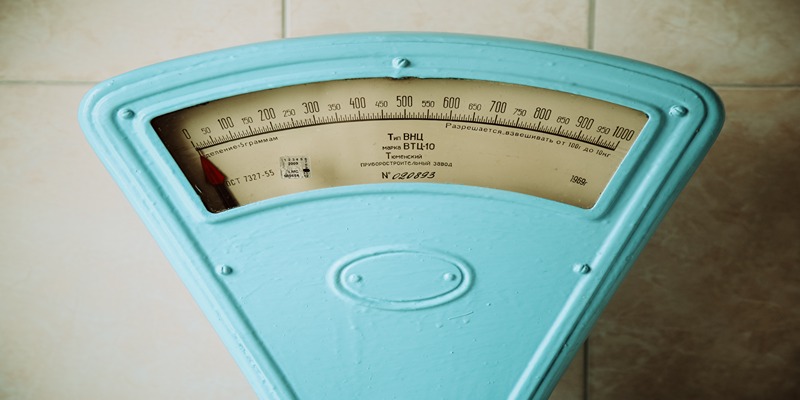Trying to live a healthy lifestyle is becoming more common in today's fast-paced society. With the rise of fitness monitoring, people can keep tabs on their exercise routines and make educated decisions in this area. But when faced with an overwhelming quantity of data and knowledge, keeping things simple becomes critical. This article gives a brief overview of fitness monitoring and stresses the need for easy methods.
We want to simplify things and make them easier to understand by exploring the idea of turning steps into calories. People may take charge of their fitness journeys when they grasp the fundamentals of calorie expenditure and the connection between steps and calories.

Understanding Step to Calorie Conversion
The Basics of Caloric Expenditure
Caloric expenditure is the amount of energy (calories) your body burns through various activities and functions. It's influenced by factors like your basal metabolic rate (BMR), which is the energy your body needs at rest, and physical activities, including daily steps. Understanding caloric expenditure is crucial because it forms the foundation for step-to-calorie conversion.
How Steps Relate to Calories Burned
Steps taken during physical activity can provide a reasonable estimate of the calories burned. The relationship between steps and calories is based on the principle that more steps generally indicate increased physical effort and energy expenditure. Fitness trackers and apps use algorithms to translate steps into calorie estimates, providing users with a tangible measure of their activity level. This relationship helps individuals gauge the impact of their daily movements on their overall energy balance.
Factors Affecting the Accuracy of Conversion
While step to calorie conversion offers a simplified approach to fitness tracking, it's essential to recognize the factors that can affect its accuracy. Variables like walking speed, terrain (e.g., uphill vs. flat surface), and individual differences in stride length can introduce variability in the conversion. Additionally, the precision of fitness-tracking devices and apps may vary. Acknowledging these factors allows individuals to use step to calorie conversion as a useful estimate while understanding its limitations. As we explore further, we'll also discuss methods to enhance the accuracy of this conversion for more informed fitness tracking.
Fitness Tracking Devices and Apps
Popular Fitness Trackers and Their Features
Fitness tracking has been revolutionized by a wide range of wearable devices, commonly known as fitness trackers. These devices, such as Fitbit, Garmin, and Apple Watch, offer an array of features to monitor physical activity. They can track steps, distance traveled, and heart rate and even provide estimates of calories burned. Popular for their user-friendly interfaces and real-time data, fitness trackers have become essential companions for those striving to lead healthier lives.
Using Mobile Apps for Step and Calorie Tracking
In addition to dedicated fitness trackers, mobile apps have emerged as powerful tools for step and calorie tracking. Apps like Google Fit, MyFitnessPal, and Apple Health integrate seamlessly with smartphones and smartwatches, turning these devices into robust fitness monitoring systems. Users can conveniently record their daily steps, log their food intake, and receive valuable insights into their activity levels and calorie expenditure. Mobile apps offer accessibility and customization, allowing individuals to tailor their fitness tracking experience to their specific goals and preferences.
Benefits and Limitations of Fitness Tracking Technology
The adoption of fitness tracking technology offers numerous benefits, including increased awareness of physical activity, motivation for goal setting, and the ability to monitor progress over time. These tools empower individuals to take control of their fitness journeys. However, it's important to acknowledge the limitations of such technology. Accuracy can vary among devices and apps, especially in estimating calorie expenditure. Additionally, reliance solely on technology may lead to a disconnect from one's body and intuitive cues. Therefore, while fitness tracking technology is a valuable asset, it should complement, rather than replace, a holistic approach to health and well-being. In the following sections, we explore simplified methods for step to calorie conversion and practical tips for incorporating fitness tracking into daily routines.

Simplified Methods for Step-to-Calorie Conversion
Rule of Thumb: Approximate Conversions
Converting steps to calories, a simplistic yet practical approach can be employed. Known as the "rule of thumb," this method hinges on average values. Typically, a person burns about 0.04 calories per step. This average is based on a stride length of approximately 2.5 feet. Therefore, for an individual walking 10,000 steps, roughly 400 calories are expended. Variations exist due to factors such as pace, body weight, and individual metabolism. This rudimentary method offers a swift estimate, but it lacks precision, making it less suitable for those seeking meticulous calorie tracking.
Online Calculators and Tools
For more refined estimations, numerous online calculators and digital tools are available. These platforms often require users to input data such as weight, height, step count, and walking speed. By processing these variables, they provide a more tailored calorie estimate. Some advanced tools even consider factors like incline and walking surface. These calculators, accessible via smartphones and websites, serve as a convenient means for individuals to obtain a closer approximation of their caloric expenditure from steps. However, their accuracy hinges on the user’s truthfulness and precision in entering personal data.
Customized Approaches for Better Accuracy
For optimal accuracy in translating steps into calories, personalized approaches are paramount. Such methods involve monitoring individual-specific factors like basal metabolic rate (BMR), active heart rate, and personal stride length. Wearable technology like fitness trackers and smartwatches can be instrumental in this process. These devices often incorporate sensors and algorithms that analyze a person's unique physiological and activity-related data. Consequently, they can furnish more accurate calorie burn estimates than generic calculators. Nonetheless, even these sophisticated gadgets have limitations and should be viewed as tools for estimation rather than exact measurements.
Practical Tips for Incorporating Step to Calorie Conversion
You may easily include fitness monitoring, which includes converting steps to calories, into your daily routine by following a few basic tactics. Determine how many calories you want to burn by starting with a low target and working your way up to a higher one, depending on your present activity level. To keep yourself motivated and measure your progress, use a fitness tracker or an app on your phone on a regular basis.
Walking rather than driving for short journeys or using the stairs instead of the lift are two examples of natural ways to enhance your step count. Get in your daily step count while reaping the rewards of nature by planning outdoor experiences like bicycling or hiking.
Conclusion
People may take responsibility for their health and wellness when fitness monitoring is made easier with a step to calorie converter. Your path to a healthy lifestyle may be paved with knowledge of calorie expenditure fundamentals, an awareness of the correlation between steps and calories burnt, and the use of fitness monitoring devices and applications.
Keep in mind that although fitness monitoring technology is helpful, it should only be used as part of a comprehensive exercise plan. Achieving your fitness objectives can be a breeze if you follow these simple guidelines. If you want to live a healthier, more active life, you should take advantage of the ease of step to calorie conversion and make educated decisions.




